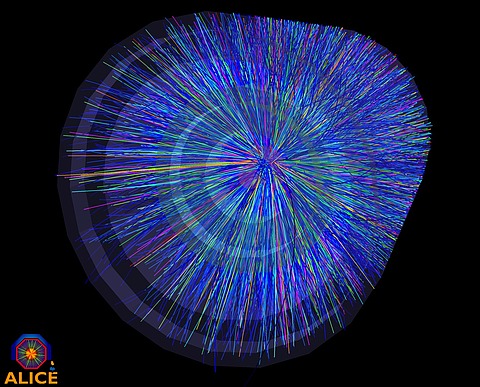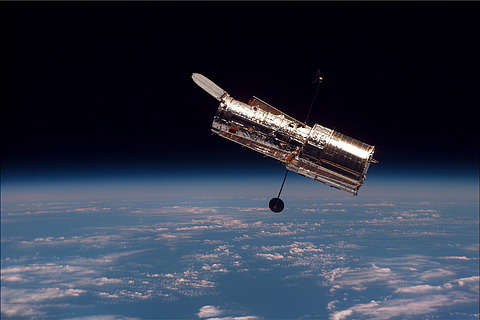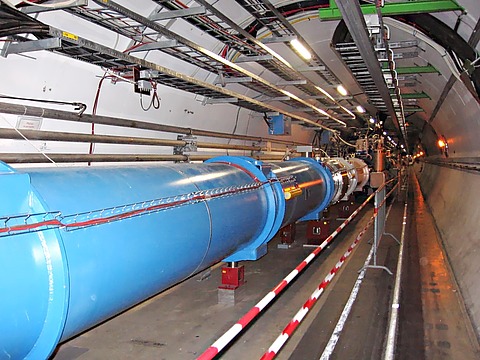
[#17] FIRST MIST IN THE UNIVERSE
[#17] First Mist in the Universe
By Piet Hut
When the Universe was ten microseconds old, mist started to form in the Universe. By the time the Universe reached the age of a hundred microseconds, the mist was complete: the Universe was drenched in tiny quark-gluon droplets that would become the protons and neutrons in the nuclei of the atoms that our bodies are built out of.
So we are made of the most ancient mist that we know of, produced when the Universe was still younger than one thousandth of the time it takes to blink an eye. But you may have heard another expression, namely that we are made of stardust. And that is true too, but on a different scale.
How are we made of stardust? The bulk of the matter that formed planets, including the Earth, is made of relatively light elements such as carbon, nitrogen, oxygen. These elements are all formed in stars, through nuclear reactions that transmuted the original hydrogen and helium, formed in the Big Bang, into these other elements. And our bodies are formed from the material lying around on the Earth. Voilà.
“We are made of stardust that is made of the oldest droplets in the Universe”
The first stardust was produced by the first stars, that appeared about a hundred million years after the Big Bang. But the nucleons, as the individual protons and neutrons are called that make up the nuclei of atoms such as carbon, are much older. They were formed when the universe was only tens of microseconds old, out of the droplets into which the quark-gluon plasma condensed around that time. In this way, we are made of stardust that is made of the oldest droplets in the Universe.
Quarks and gluons are the constituents of nucleons, and under normal circumstances they cannot be liberated from the nucleons to which they are confined. It takes either a very high temperature, about two hundred trillion degrees Kelvin, or a very high density, quadrillions times the density of rocks, or both, to let nucleons "melt" into a soup of freely moving quarks and gluons.

This feat has been accomplished to varying degrees in the last few decades at some of the most powerful particle accelerators in the world. There, for a very short time, collisions of heavy ions succeed in recreating the conditions of the Universe when it was only microseconds old. And after the most energetic collisions, droplets of quark-gluon plasma again condense into protons and neutrons, just as they did in the Universe so very early on.
When the universe was a few million times older, at a venerable age of a few minutes, most of the protons would form hydrogen, many of the neutrons would combine with protons to form helium, and the remaining neutrons would decay a bit later into protons, adding to the hydrogen content of the universe. As a result, the mixture of matter emerging out of the Big Bang was roughly three quarter hydrogen and one quarter helium by weight, and contained much less than one percent in terms of other elements.
“How old are you?”
Most of our body weight is in water. A water molecule contains two hydrogen nuclei (protons), one oxygen nucleus (containing protons and neutrons), and electrons. Before the first microsecond after the Big Bang, of the bulk of the material currently forming our bodies, only the electrons were present. After a few tens of microseconds passed, protons and neutrons were formed, the heavier building blocks of our body (all the electrons in our body make up only two or three ounce of our body mass).

So when someone asks "how old are you?", one honest answer would be "about ten microseconds less old than our Universe". That would be a nucleon answer, for the protons and neutrons that make up more than 99.9% of your body weight. A nuclear answer, on the level of atoms that form the stardust, would be: "a mix of ages, between four and a half and thirteen and a half billions years". A biological answer would be a few years, which is the time it takes for half of our cells to be replaced. And a chemical answer, on the level of molecules, would be even much shorter, given that there is a high level of constant molecular turn-over going on in each cell.

Isn't it wonderful to be an astrophysicist? Like the job of an architect, which combines the unlikely elements of art and technology, the occupation of an astrophysicist combines some even more unlikely elements, including mythology and technology. In order to pursue the question of how the Universe was born and grew up, observations by multi-billion dollar spacecrafts are combined with findings from multi-billion dollar particle accelerators, to probe what happened just after the start of the Big Bang. And the answers to "how old are you?" in the previous paragraph are based on the accumulated knowledge, provided by observations, experiments, and theory, accumulated in the last half century. Within the span of a single human lifetime, our scientific knowledge has finally provided empirical answers for some of the age old questions concerning our origins.
Piet Hut is President of YHouse (where this blog is hosted), Professor of Astrophysics and Head of the Program in Interdisciplinary Studies at the Institute for Advanced Study in Princeton, and a Principal Investigator and Councilor of the Earth-Life Science Institute in the Tokyo Institute of Technology.